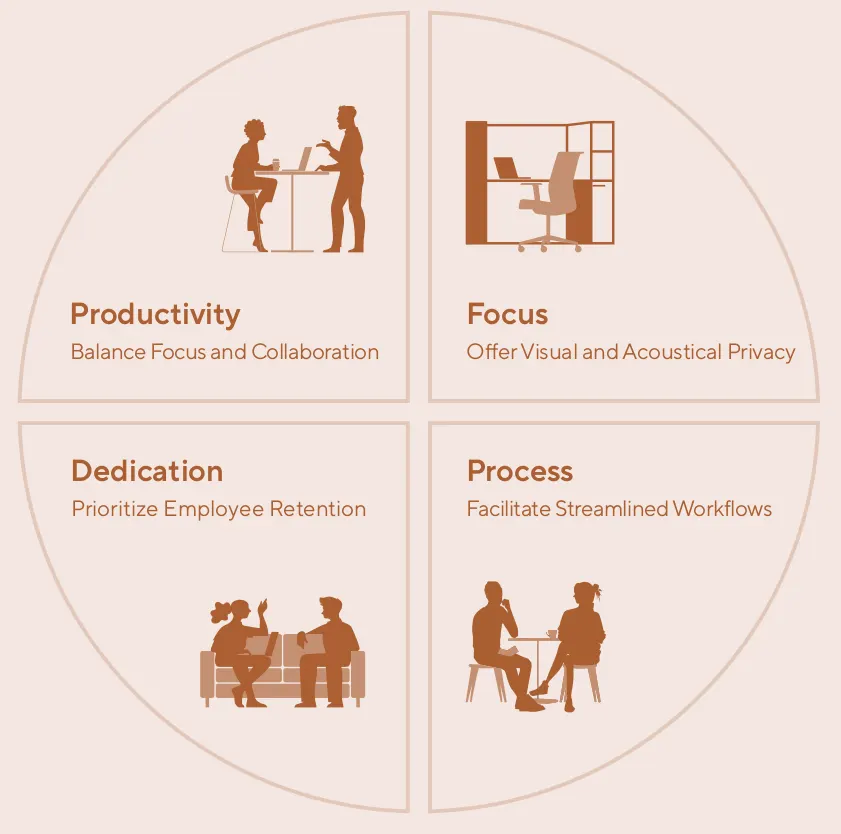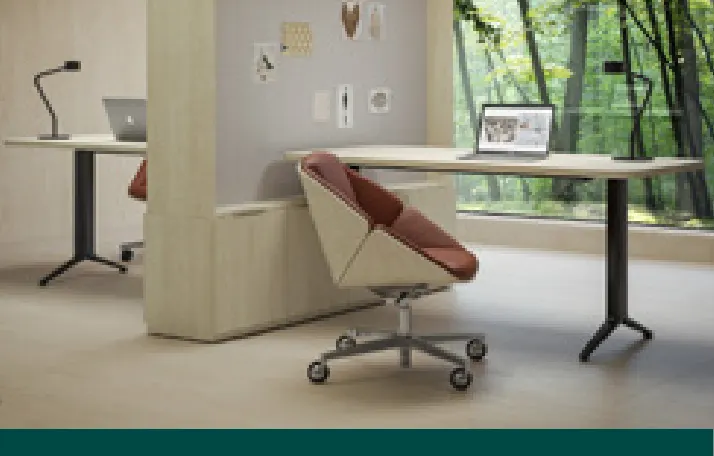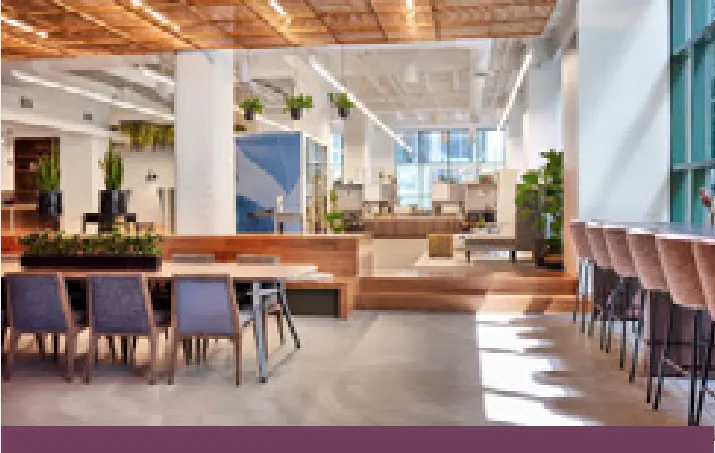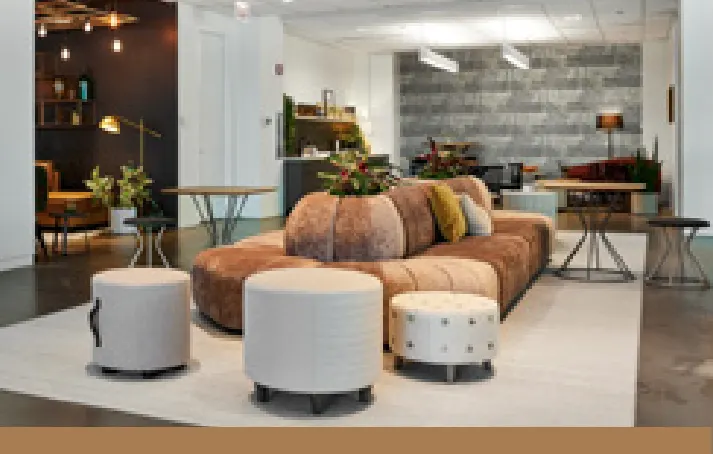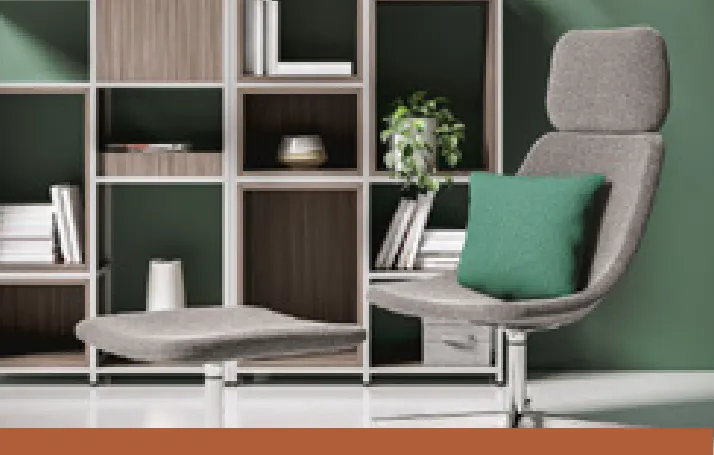Designing Workspaces That Unlock Productivity
Each organization possesses a unique company culture that defines its ethos and shapes how its employees interact, make decisions, and achieve a sense of belonging. Among Kimball International’s five identified culture types, the Classic culture stands out as one that emphasizes structured hierarchy, productivity, and a reliance on established systems. By understanding the nuances of the Classic culture, we can tailor workspaces to align with this culture’s values and goals, fostering efficiency and enhancing belonging to create positive outcomes for all.
Understanding the Classic Culture
The Classic culture embodies a structured and steadfast approach to organizational operations. It places a high value on data-driven decision making and adopts a risk-averse stance to ensure stability and security. This culture prizes efficiency, relying on well-defined roles and processes that facilitate streamlined workflows and task completion. With an emphasis on functional departments and a large workforce, this culture maintains a clearly defined chain of command and typically promotes onsite work.
Classic Culture Traits
Space Design Considerations
The physical makeup of a work environment, from the configuration of workspaces to the selection of design elements, can significantly contribute to cultivating a strong sense of belonging among employees. For the Classic culture, designing an effective work environment that promotes belonging involves creating settings that cater to individual productivity needs while also offering a variety of spaces to support meetings and social interaction with others. Furniture selection is crucial and should prioritize task-specific functionality. Individual workspaces should include options that fulfill the need for complete acoustic and visual privacy to enhance focus. Providing dedicated spaces for lounging and connecting ensures that interactions are purposeful and occur within designated areas, reducing distractions for others. Consider providing adjustable personal lighting within workspaces to enhance productivity while also providing a sense of autonomy.
The Value of Human Centered Design
1. Kimball International, Understanding the Evolving Workplace Study, 2022
2. O.C. Tanner Institute, Global Culture Study, 2023
3. Kimball International, Workplace Assessment on Culture & Belonging, 2024
4. Gensler, Global Workplace Survey Comparison, 2023
The Role of Space Types Within the Classic Culture
Kimball International’s research uncovered six pivotal space types that are crucial for cultivating a thriving workplace and elevating a sense of belonging. Specific to the needs of the Adaptor culture, the space types can be prioritized in the following way :
Space Ratio Suggestions for the Classic Culture
Work Your Way
Facilitating day-to-day work is paramount for the Classic culture. These workspaces support users throughout their workday, providing areas for focus work while also accommodating collaborative activities as needed. Ranging from private zones with visual and acoustical privacy to informal meeting areas, these spaces cater to planned tasks and impromptu group work. The Classic culture values efficiency, and these versatile workspaces foster individual productivity and seamless interaction.
The Meet-Up
Conference rooms and huddle spaces equipped with the latest technology encourage effective collaboration and creative problem-solving. While the Classic culture values individual productivity, it also must accommodate the need for group work and top-down information sharing among teams. Providing tech-enabled spaces that support both physical and virtual gatherings is essential for reinforcing the Classic culture's commitment to productivity, efficiency, and structure.
Culture Café
Culture Café spaces play a pivotal role in defining an organization’s brand and culture. These designated areas provide a variety of seating options that are ideal for meetings, catch-ups, and quick bites. For the Classic culture, they become hubs for socialization and connectivity, fostering a sense of community and shared purpose among employees and team members.
Room on the Move
Versatile and movable furniture solutions comprise Room on the Move spaces, facilitating seamless transitions and supporting learning, training, and mentoring activities. These flexible spaces align with the Classic culture's emphasis on efficiency and productivity and its affinity for task-specific functionality.
The Hub
Described as the heartbeat of the office, The Hub serves as a central gathering point supporting socialization and connectivity. Featuring comfortable, casual, and eclectic furnishings, it provides a designated area for team interactions and relationship building, reinforcing the Classic culture's need for functional collaboration.
Well + Good
Well + Good spaces, dedicated to promoting health and well-being, provide Classic culture employees with opportunities for respite and rejuvenation. These areas are designed to enhance productivity and efficiency by offering moments of relaxation, contributing to a culture that prioritizes stability and efficient task completion.
Creating Places to Belong
Understanding the Classic culture's values and goals is key to shaping a work environment that not only upholds its fundamental principles but also nurtures a sense of belonging among its employees. By striking the right balance between space types that embody efficiency, enhance individual focus, and allow for structured collaboration, organizations can unlock the full potential of the Classic culture, fostering a workplace where process, productivity, and belonging coexist in perfect harmony.

